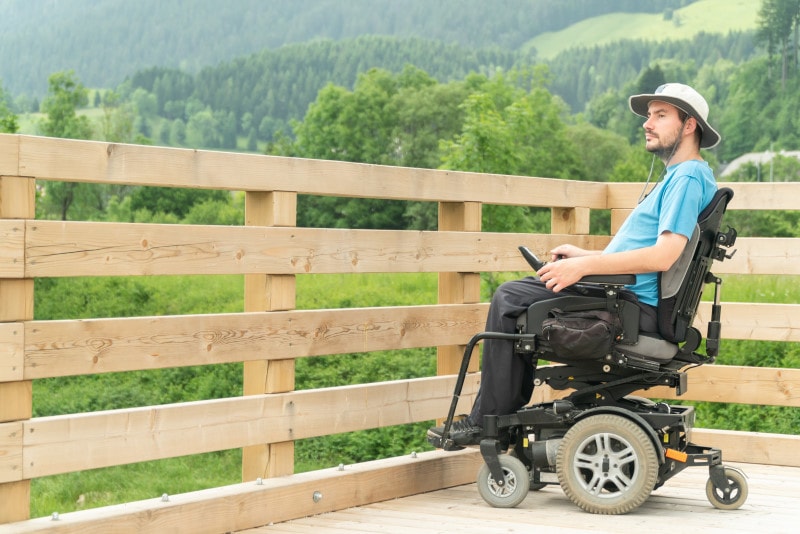We often get asked about the difference between a power wheelchair and a mobility scooter. After all, don’t they both help you get around?
If you have challenges with daily mobility, see your physician for an evaluation. He or she will also determine whether a mobility device is necessary for daily living functions.
But there are several important differences between power wheelchairs and mobility scooters. Here are some things to consider.
Designed to Improve Different Daily Limitations
How mobile are you? Can you freely use your arms and hands? Are you able to stand and take a few steps by yourself?
Mobility scooters fit these people who have minor challenges with mobility. They typically have a tiller with handles to maneuver the device. Thus, good use of your hands and arms is important.
Scooters are popular for those who want assistance with walking distances, especially outdoors, while shopping, or at events.
Power wheelchairs, however, are often used by people with limited range of motion and mobility. A joystick on one of the armrests has the steering mechanism, so controls are close at hand. They are usually prescribed as medically necessary for the completion of daily activities and can be customizable. They are often designed with options for tilt, recline, and elevated seat and leg rests.
Seating
Power wheelchairs often come with captain’s style seat, which is contoured in a saddle shape on the seat pad, and it often has armrests too. The seating for wheelchairs is more customizable for different people’s needs.
Mobility scooters typically come with standard vinyl seating, but the seats can sometimes be equipped to swivel.
Wheels
An electric scooter has three to four wheels, and a power wheelchair usually has six, two large ones and four casters for stability. Three-wheel scooters are often more suitable for taller people because they offer more leg room, as opposed to four-wheel scooters.
Indoor v. Outdoor
Since power wheelchairs are typically prescribed as necessary for daily mobility activity, they are primarily used indoors. Power chairs are more maneuverable indoors. Some models may be used outdoors, but usually in ideal situations, such as on paved, even surfaces.
Mobility scooters can be used indoor and out. You often see these available for rent at shopping malls, amusement parks, and other locations where people might need a bit of help getting around. Many scooters are also designed for rugged terrain, so can be used in the back yard and other grassy-type areas.
Insurance Coverage
In either case, your doctor will need to deem it medically necessary for you to have a wheelchair before Medicare will cover it. If you have private insurance, you will have to speak with a representative about what your policy covers.
Mobility scooters can be purchased as a retail item, but there are a lot of models and options to sort through. It’s best to talk with someone experienced in determining the right one for your individual needs.
Christian Mobility is a qualified Medicare provider, so we help take the hassle out of getting your mobility device when it comes to insurance coverage.
The Christian Mobility Experience
We know it can be difficult and confusing to navigate the purchase of a wheelchair or a scooter. That’s why Christian Mobility provides experts who can help you understand your options, so you can make the best choice for your mobility needs.
Contact usContact Us to get started with one of our experts and find the best mobility aid for your needs and lifestyle. Life doesn’t have to slow down. With the right fit, you can find the freedom to keep living fully, and Christian Mobility is here to help.





